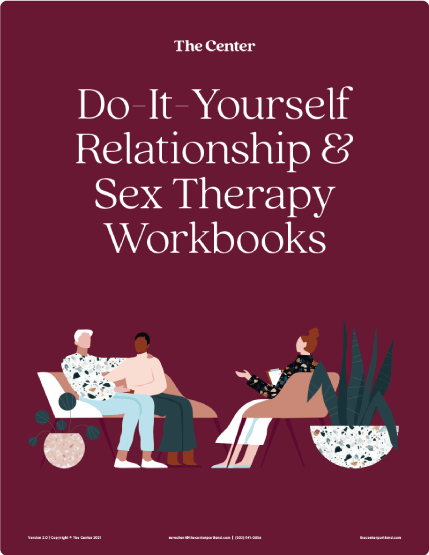Did you know that your early childhood experiences shape the foundation of your world in ways you might not realize? They even show up in your relationships today.
Think about yourself as a young child, eyes wide, looking up at the adults in your life for guidance and care. These early interactions create the blueprint for how you understand love, trust, and safety.
Perhaps, when you cried, you had a parent who rushed to comfort you, hold you close, and soothe you. In these moments, you learned one truth: the world is a safe place, and you can rely on others to meet your needs. This is where the seeds of a secure attachment are sown.
But think about a different scenario. You cry out, but no one comes. Or maybe when someone does come, their attention is inconsistent — sometimes warm, sometimes distant, depending on their mood or their own struggles.
As a child, you may have felt a sense of panic, a desperate need to hold onto any bit of affection that came your way. Or you learned to withdraw to protect yourself from the pain of unmet needs.
These early experiences shape the attachment style that follows you into adulthood. They form the basis for how you relate to others in all relationships – friendships, romantic, and sexual relationships.
The Four Attachment Styles
There are four main attachment styles, each formed by these early experiences, and they influence how you connect with others.
Anxious (Preoccupied) Attachment
If your caregivers were inconsistent in their care, you may have developed an anxious attachment style. In adult relationships, this shows up as a constant need for reassurance.
You might feel worried that your partner doesn’t love you enough or that they’ll leave you. There’s an underlying fear of abandonment, and you may find yourself becoming clingy or overwhelmed with thoughts about the relationship.
Sex, in this case, might be a place where you seek validation, needing your partner to constantly reassure you of their love and attraction.
Avoidant (Dismissive) Attachment
If your caregivers were emotionally unavailable or dismissive of your needs, you may have learned to be self-reliant, which developed into an avoidant attachment style. You might have learned to suppress your emotions by telling yourself that needing others is a sign of weakness.
In relationships, you keep an emotional distance and find it difficult to fully open up. You value independence and may feel suffocated by your partner’s emotional needs.
In your intimate life, you might avoid emotional closeness and separate sex from emotional intimacy as a way to maintain your sense of control.
Disorganized (Fearful-Avoidant) Attachment
If your early caregivers were unpredictable or even a source of fear, your attachment style might be disorganized.
This creates a deep inner conflict where you both crave connection, and you also fear it.
In adult relationships, this can look like intense push-pull dynamics. One moment, you may feel desperate for closeness, and the next, you might pull away in fear.
In your sexual relationships, this can create confusion or fear around intimacy. You might feel vulnerable, exposed, or unsafe when trying to connect with your partner on a deeper level.
Secure Attachment
If your caregivers were reliable and consistently met your needs, you likely developed a secure attachment style. In adult relationships, this looks like confidence in yourself and your partner. You trust that you are loved and can express your needs without fear of rejection.
You feel comfortable with intimacy and can balance closeness with independence. In your sexual life, this security allows you to be fully present and enjoy a healthy, balanced connection with your partner.
How Your Attachment Style Shows Up in Adult Relationships
Let’s take a moment to look at how people with different attachment styles might respond to a moment of conflict with their partner (which is normal and going to happen).
If you have an anxious attachment style, your mind might race with worries: Do they still love me? Are they going to leave?
In the bedroom, you might use physical intimacy as a way to soothe this anxiety, needing constant affirmation that you’re still desired.
If you have an avoidant attachment style, you might feel overwhelmed by conflict. Rather than engage, you may shut down and distance yourself emotionally.
This can translate into your sex life, where you might disengage, using sex as a purely physical act, detached from the emotional connection that strengthens a relationship.
If your attachment style is disorganized, you might feel torn. One part of you wants to move closer, while another is pushing your partner away. The confusion you feel internally can play out in your intimate life, where the fear of getting too close might make sex feel confusing rather than a source of connection.
For those with a secure attachment style, conflict is handled with open communication and trust. You know that disagreements don’t signal the end of the relationship, and you’re able to discuss your feelings calmly.
Attachment Styles Aren’t Permanent
The good news is that your attachment style isn’t set in stone.
While it might feel like these patterns are deeply ingrained, with awareness and effort, you can move toward a healthier way of relating. Recognizing your attachment style is the first step. From there, you can begin to challenge the old patterns that no longer serve you.
If you need some support, a therapist can help you explore your attachment style and understand how it affects your relationships. In therapy, you’ll learn new ways to communicate, manage conflict, and build trust. Over time, you can begin to form healthy attachment patterns that allow you to experience deeper intimacy.
Your attachment style doesn’t have to define your relationships forever.
With the help of a skilled therapist, you can heal old wounds, move toward secure attachment, and create a relationship with the emotional and physical intimacy you desire.







